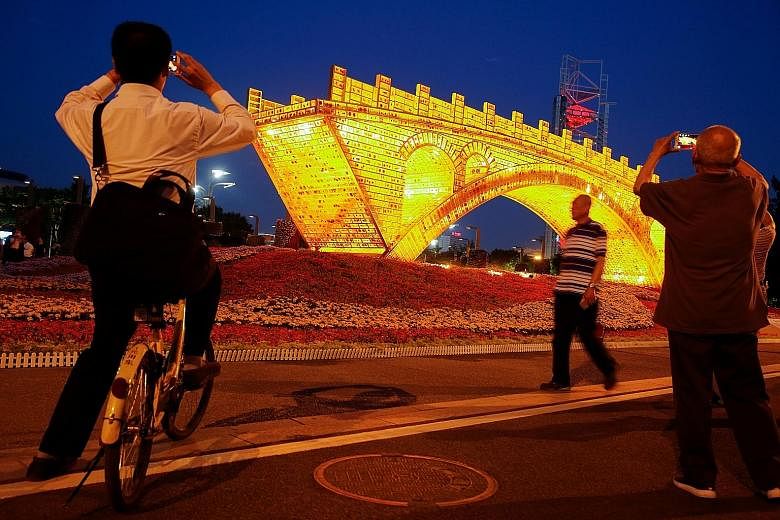BEIJING • China is one of the few countries in the world today with money to spend, and President Xi Jinping is ready to write some cheques.
He will host almost 30 world leaders in Beijing tomorrow at the first Belt and Road Forum, the centrepiece of a soft-power push backed by hundreds of billions of dollars for infrastructure projects. More than 100 countries on five continents have signed up, showing the demand for global economic cooperation despite rising protectionism in the United States and Europe.
For Mr Xi, the initiative is designed to solidify his image as one of the world's leading advocates of globalisation, while US President Donald Trump cuts overseas funds in the name of America First. The summit aims to ease concerns about China's rise and boost Mr Xi's profile at home, where he has become the most powerful leader since Deng Xiaoping died in 1997.
The Belt and Road Initiative (BRI), also known as One Belt, One Road, "will likely be Xi's most lasting legacy", said Mr Trey McArver, the London-based director of China research for TS Lombard. "It has the potential to remake global, particularly Asian, trade and economic patterns."
How Mr Xi answers a range of outstanding questions will go a long way in determining its success. Key to reducing uncertainty will be addressing the concerns of strategic rivals such as India, Russia and the US, particularly as China's growing military prowess lets it be more assertive over disputed territory.
Chinese moves to spend more than US$50 billion (S$70 billion) on an economic corridor in Pakistan as well as to build a port in Djibouti and construct oil pipelines in Central Asia are creating infrastructure that could be used to challenge traditional powers.
"China needs to recognise that the way it perceives the BRI is not necessarily the same way others will," said Mr Paul Haenle, a former China director on the US National Security Council who now heads the Carnegie-Tsinghua Centre in Beijing. For countries like the US, he said, "it's impossible not to view the BRI through a geopolitical lens - a Chinese effort to build a sphere of influence".
One key driver of the initiative is economic: China wants to spur growth in underdeveloped hinterlands and find more markets for excess industrial capacity. With over US$3 trillion in international reserves, China has more resources than developed economies struggling to hit budget targets.
The plan gained steam last year when populist movements spurred a backlash against trade and immigration in the US and Europe. Brexit raised questions about the European Union's viability, while Mr Trump's withdrawal from the Trans-Pacific Partnership gutted the biggest US push to shape global economic rules.
"It makes us feel that there is a big vacuum that Belt and Road can help to fill," said Value Partners Group chairman and co-chief investment Cheah Cheng Hye. "So all of a sudden, we begin to appreciate this Chinese initiative."
Mr Xi wasted no time filling the void. He told the global elite in Davos, Switzerland, to resist protectionism and join China in boosting global commerce.
The US and Europe "almost unwittingly" created space for Mr Xi to push China's interests, said Lowy Institute for International Policy research fellow Peter Cai. "China is offering an alternative to the US version of globalisation. In the Chinese case, it's globalisation paved by concrete: railways, highways, pipelines, ports."
BLOOMBERG

